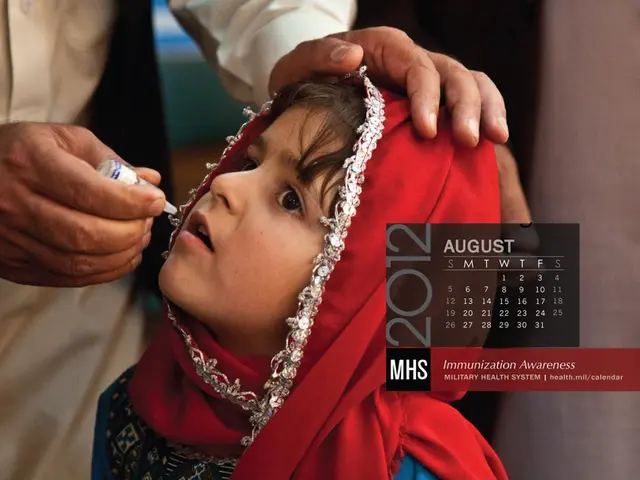Connection Between Breast and Ovarian Cancer: Identified Links and Potential Risk Factors
Taking a Deep Dive into the Connection between Breast and Ovarian Cancer
Cancer of both the breast and the ovary aren't just related by their similarity; they're wedded by a series of genetic and lifestyle factors. Analyzing these elements can help us gauge and manage the risk of these tumors.
The Genetic Thread
BRCA1 and BRCA2
- Incidence: Around 5-10% of breast and ovarian cancers are hereditary, with 70-85% of these cases tied to mutations in the BRCA1 or BRCA2 genes [1][2][3].
- Risk: A woman with a BRCA1 mutation stands a 44% chance of ovarian cancer and a 72% chance of breast cancer by age 80. In comparison, a woman with a BRCA2 mutation has a 17% risk of ovarian cancer and a whopping 69% chance of breast cancer by the same age [5].
Additional Genetic Factors
- ATM, CHEK2, and PALB2 contribute to the risk, though not as significantly as BRCA1 and BRCA2 [4].
The Lifestyle Knot
Shared Lifestyle Factors
- Obesity: This factor increases the risk of postmenopausal breast cancer and may influence ovarian cancer as well [4].
- Physical Activity: Regular exercise appears to reduce the risk of breast cancer.
- Diet: Consuming a diet rich in fruits, vegetables, and whole grains may lower the risk of both cancer types.
Unique Lifestyle Factors
- Hormonal Factors for Breast Cancer: Early menstruation, late menopause, and hormone replacement therapy can augment the breast cancer risk [4].
- Reproductive Factors for Ovarian Cancer: Having children, particularly at a younger age, and breastfeeding can lessen the risk of ovarian cancer [3].
The Interplay between Breast and Ovarian Cancer
- Common Genetic Predisposition: The existence of BRCA mutations escalates the risk of both cancers, indicating a shared genetic foundation [5].
- Preventive Measures: Strategies like prophylactic mastectomy and salpingo-oophorectomy (removal of the ovaries and fallopian tubes) can decrease the risk of both cancers in high-risk individuals [5].
Both genetic and lifestyle factors shape the growth of breast and ovarian cancers, with a notable overlap in risk factors, especially BRCA1 and BRCA2 genes. Comprehending these factors helps individuals and healthcare providers evaluate and handle cancer risk more effectively.
- Approximately 5-10% of breast and ovarian cancers are hereditary, with these cases predominantly linked to mutations in the BRCA1 or BRCA2 genes.
- A woman with a BRCA1 mutation has a 44% chance of ovarian cancer and a 72% chance of breast cancer by age 80, while a woman with a BRCA2 mutation has a 17% risk of ovarian cancer and a 69% chance of breast cancer by the same age.
- Obesity increases the risk of postmenopausal breast cancer and may also influence ovarian cancer.
- Regular exercise can reduce the risk of breast cancer, and consuming a diet rich in fruits, vegetables, and whole grains may lower the risk of both cancer types.
- Hormonal factors like early menstruation, late menopause, and hormone replacement therapy can augment the risk of breast cancer, while having children, particularly at a younger age, and breastfeeding can lessen the risk of ovarian cancer.
- Strategies like prophylactic mastectomy and salpingo-oophorectomy can decrease the risk of both breast and ovarian cancers in high-risk individuals, as these cancers often share a common genetic predisposition.








